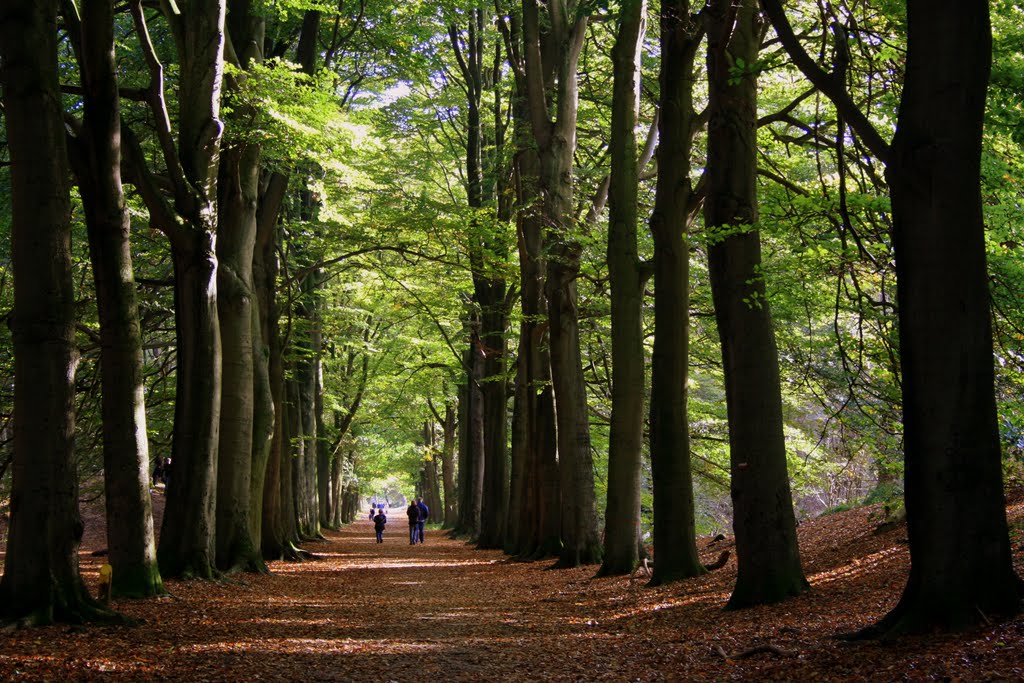
Photo: countryfile.com
“The evidence is strong and growing that people and communities can only thrive when they have access to nature. We all need nature in our lives, it gives us freedom and helps us live healthily; yet deprived communities are routinely cut off from nature in their surroundings and it is suffocating for their well-being.”Access to nature reduces depression and obesity, finds European study
In this troubled world let the beauty of nature and simple life be our greatest teachers

Oxwich Bay, South Wales-Photo: Anne Mofid
“When beauty touches our lives, the moment becomes luminous. These grace-moments are gifts that surprise us. When we look beyond the moment to our life journey, perhaps we can choose a new rhythm of journeying which would be more conscious of beauty and more open to inviting her to disclose herself to us in all the situations we travel through.”-John O’Donohue
We should look beyond economics and open our eyes to beauty
“We seem to have forgotten that the human spirit is not satisfied by material progress alone. It’s time for us to reconnect with nature.”-Fiona Reynolds, former National Trust director general
In this troubled world let the beauty of nature and simple life be our greatest teachers
Why everyone can benefit from heading into the woods

Photo:theguardian.com
‘Woodlands and forests are vital to our physical and mental health - and yet, forest cover in Britain has fallen dramatically since the Industrial Revolution. Author Vybarr Cregan-Reid explores the health benefits of 'forest bathing' and the science behind it.
Hundreds of years ago, most of Britain was covered in woodland, but our use of this land over the years was so extensive that during the nineteenth century, as smoke-coughing chimneys shot up like leylandii in the factory towns, forest cover in the UK dipped below 4%. Clearly, we have been a force of destructive change.
More recently though, scientists and environmental psychologists (particularly from Japan - a country which boasts a staggering rate of forest cover at 67%) have begun to discover some of the magic that woodlands can work on us if we are willing to preserve and spend time in them.
In Japan, the practice that is being investigated is called shinrin-yoku, which translates as ‘forest bathing’ (all that is necessary to ‘bathe’ is that you spend some time soaking up the woodland atmosphere). Scientists are tracing the effects that time spent in forest environments has on the body and mind, with early trials showing amazing results.
So why are forests so good for us? Between the Soviet Wars, Russian biochemist Boris Tokin began to look into the activity of plants’ immune systems. He found that some plants and trees emit volatile organic compounds (this is ‘science’ for garlic and pine trees have a strong smell). These compounds are called phytoncides, and they protect plants and trees from organisms such as bacteria, mould, or fungi. There are thousands of different phytoncides but they are found in greatest density in forests, especially those that have coniferous trees.
The trials that have been run in the last few years have demonstrated that forest environments proactively interact with our bodies with real impact. The most common effect measured comes under the umbrella of ‘stress reduction’. One study found lower concentrations of cortisol in forest bathers. Cortisol is a stress hormone that encourages the storage of abdominal body fat, suppresses the immune system, can contribute to heart disease and cause fertility problems. If all that weren’t bad enough, cortisol also acts like a kind of rust in the circuitry of the brain, too.
There are a host of other bodily indicators that signal the clear ways that forests relax us. One surprisingly potent effect is that exposure to woodland spaces increases human natural killer cell (NK) activity in the body as well as the expression of anti-cancer proteins - and this NK activity has been documented as lasting for between seven and 30 days after the forest visit had ended.
When I spoke with Dr Chorong Song, an associate professor at the Center for Environment, Health and Field Sciences at Chiba University in Japan, she told me about another significant health benefit of going wild in the woods. It is one that could impact on the millions that suffer from strokes and heart disease. Her research has shown that participants with high ‘blood pressure and pulse rate demonstrated a decrease in these values after walking in a forest area, whereas those with low initial values showed an increase.’ The effect was specific to forest environments and it surprisingly benefitted both groups.
In the UK, although we have been slower to prioritise research into woodlands and wellbeing, we are way ahead with investigations into the restorative and recuperative powers of nature more broadly. Research particularly out of the ‘Green Exercise’ hub at the University of Essex is repeatedly demonstrating the sympathetic relationships that exist between our bodies and their environments. They have even conducted research measuring which particular senses seem most important for the ‘green effect’, with the smell of phytoncides proving particularly key.
While our forest cover rate has improved since the nineteenth century (it has crawled back to 8%) it remains only a fraction of what Japan boasts. It is perhaps for this reason that there has been less specifically woodland-focused research in the UK, but the opportunities for it seem wide open and important priority for the future for a number of reasons. And given our relative lack of forest cover, it seems all the more important to be asking how we can benefit from their preservation.
Nature the Best Teacher: Re-Connecting the World’s Children with Nature

As children, so many of our bedtime stories were set deep in woodland, where magic and mystery where the norm; the forest was a place where anything seemed possible. It is no surprise that the last benefit I learned about was that forest time ‘improved nocturnal sleep conditions for individuals with sleep complaints’. They quite literally ensure a good night’s rest.
The science will continue to turn up some jaw-dropping results encouraging us to rethink how we use these environments. Might this herald a further use to which humans will head for the woods? The odd thing is that if we use forests for their health benefits, it seems that this is one of their best defences against their destruction by humans. A number of studies have demonstrated that empathy for the environment increases drastically when we actually spend time in natural places, rather than merely thinking or reading about them. The more of us that head to the woods (instead of, say, a gym) to seek out its freely available miracle-cures, the more likely these places will be preserved for future generations.
Over the years, our model of consumption brought about the destruction of about 90% of Britain’s woodland. But with shinrin-yoku, this model starts to breakdown altogether because for forest bathers’ demand can never really outstrip supply. Instead, it seems demand, through empathy, is the best weapon we have to ensure the woodlands’ longevity.
Reasons to choose a forest walk

Photo: panoramio.com
Although a forest walk will do all the things you might expect, enhance mood, increase feelings of calmness, it will also kick-start a whole ream of physical and psychological effects that contribute to health and wellbeing
- relieves symptoms of high (and low) blood pressure
- reduces levels of the stress hormone cortisol
- helps those with sleep complaints
- increases in NK cell activity (that can help fight some cancers)
- may contribute to better appetite control
- research shows that individuals are more likely to ‘connect’ to others
For inspiration, why not take a a look at Britain's best forests and woodlands to visit here’
See the original article: Why everyone can benefit from heading into the woods
Vybarr Cregan-Reid teaches at the University of Kent and is the author of Footnotes: How Running Makes us Human (Ebury).
How Walking in Nature Changes the Brain By Gretchen Reynolds, New York Times, 22 July 2015

Photo:theguardian.com
A walk in the park may soothe the mind and, in the process, change the workings of our brains in ways that improve our mental health, according to an interesting new study of the physical effects on the brain of visiting nature.
Most of us today live in cities and spend far less time outside in green, natural spaces than people did several generations ago.
City dwellers also have a higher risk for anxiety, depression and other mental illnesses than people living outside urban centers, studies show.
These developments seem to be linked to some extent, according to a growing body of research. Various studies have found that urban dwellers with little access to green spaces have a higher incidence of psychological problems than people living near parks and that city dwellers who visit natural environments have lower levels of stress hormones immediately afterward than people who have not recently been outside.
But just how a visit to a park or other green space might alter mood has been unclear. Does experiencing nature actually change our brains in some way that affects our emotional health?
That possibility intrigued Gregory Bratman, a graduate student at the Emmett Interdisciplinary Program in Environment and Resources at Stanford University, who has been studying the psychological effects of urban living. In an earlier study published last month, he and his colleagues found that volunteers who walked briefly through a lush, green portion of the Stanford campus were more attentive and happier afterward than volunteers who strolled for the same amount of time near heavy traffic.
But that study did not examine the neurological mechanisms that might underlie the effects of being outside in nature.
So for the new study, which was published last week in Proceedings of the National Academy of Sciences, Mr. Bratman and his collaborators decided to closely scrutinize what effect a walk might have on a person’s tendency to brood.
Brooding, which is known among cognitive scientists as morbid rumination, is a mental state familiar to most of us, in which we can’t seem to stop chewing over the ways in which things are wrong with ourselves and our lives. This broken-record fretting is not healthy or helpful. It can be a precursor to depression and is disproportionately common among city dwellers compared with people living outside urban areas, studies show.
Perhaps most interesting for the purposes of Mr. Bratman and his colleagues, however, such rumination also is strongly associated with increased activity in a portion of the brain known as the subgenual prefrontal cortex.
If the researchers could track activity in that part of the brain before and after people visited nature, Mr. Bratman realized, they would have a better idea about whether and to what extent nature changes people’s minds.
Mr. Bratman and his colleagues first gathered 38 healthy, adult city dwellers and asked them to complete a questionnaire to determine their normal level of morbid rumination.
The researchers also checked for brain activity in each volunteer’s subgenual prefrontal cortex, using scans that track blood flow through the brain. Greater blood flow to parts of the brain usually signals more activity in those areas.
Then the scientists randomly assigned half of the volunteers to walk for 90 minutes through a leafy, quiet, parklike portion of the Stanford campus or next to a loud, hectic, multi-lane highway in Palo Alto. The volunteers were not allowed to have companions or listen to music. They were allowed to walk at their own pace.
Immediately after completing their walks, the volunteers returned to the lab and repeated both the questionnaire and the brain scan.
As might have been expected, walking along the highway had not soothed people’s minds. Blood flow to their subgenual prefrontal cortex was still high and their broodiness scores were unchanged.
But the volunteers who had strolled along the quiet, tree-lined paths showed slight but meaningful improvements in their mental health, according to their scores on the questionnaire. They were not dwelling on the negative aspects of their lives as much as they had been before the walk.
They also had less blood flow to the subgenual prefrontal cortex. That portion of their brains were quieter.
These results “strongly suggest that getting out into natural environments” could be an easy and almost immediate way to improve moods for city dwellers, Mr. Bratman said.
But of course many questions remain, he said, including how much time in nature is sufficient or ideal for our mental health, as well as what aspects of the natural world are most soothing. Is it the greenery, quiet, sunniness, loamy smells, all of those, or something else that lifts our moods? Do we need to be walking or otherwise physically active outside to gain the fullest psychological benefits? Should we be alone or could companionship amplify mood enhancements?
“There’s a tremendous amount of study that still needs to be done,” Mr. Bratman said.
But in the meantime, he pointed out, there is little downside to strolling through the nearest park, and some chance that you might beneficially muffle, at least for awhile, your subgenual prefrontal cortex.
See and read the original article: How Walking in Nature Changes the Brain
See some of the greatest UK walks
